 Facebook
Facebook
 X
X
 Instagram
Instagram
 TikTok
TikTok
 Youtube
Youtube
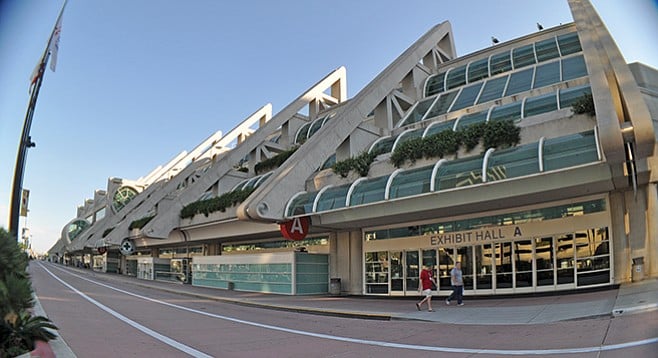
There are two particularly noisome kinds of welfare for the superrich: subsidization of pro sports facilities and subsidization of hotels. Leave it to San Diego to combine the two so taxpayers may have to cast only one vote in November to bestow big bucks on both kinds of billionaires.
This time, though, there is a difference: some members of the establishment — including hoteliers, the mayor, and Republicans — question the proposal.
Welfare for pro sports and hotel billionaires would be glued together into something called a “convadium” — a Chargers tax-supported football stadium attached to a tax-financed convention center. Disingenuously, this convadium is being called an “expansion” of the current center. It’s not, because it’s several blocks away from the existing center, so it can only be used for two separate conventions.
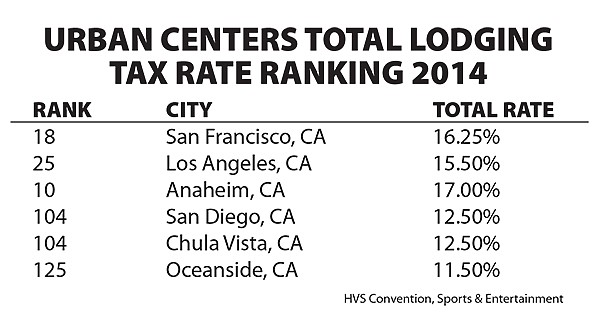
“Typically, when people are booking a convention, they like it all to be housed under one roof,” says Jerry Morrison, a San Diego hotel expert. Convention attendees “are dragging a bag around all day. They don’t want to take a cab or a bus five or six blocks to go to the next meeting.” Thus, hoteliers want a contiguous expansion of the current center. Republicans don’t like the convadium because the hotel tax would be boosted from 12.5 to 16.5 percent.
Because mainstream media hide the truth about convention center finances, you may not know about the hotel/convention center taxpayer fleece job. First, the construction of large hotels is often subsidized — say 15 percent of the cost.
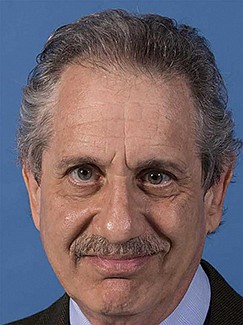
Then, year after year, convention centers are huge drains on local governments. Heywood Sanders, who accurately predicted the vast overbuilding of American centers back in 2005 for the Brookings Institution and in 2014 wrote an exhaustive book on the topic, Convention Center Follies, says, “Only a tiny handful of convention centers in the U.S. actually make an operating profit” — that is, bring in enough income to cover expenses. Fewer than 5 percent of U.S. centers have income topping expenses.
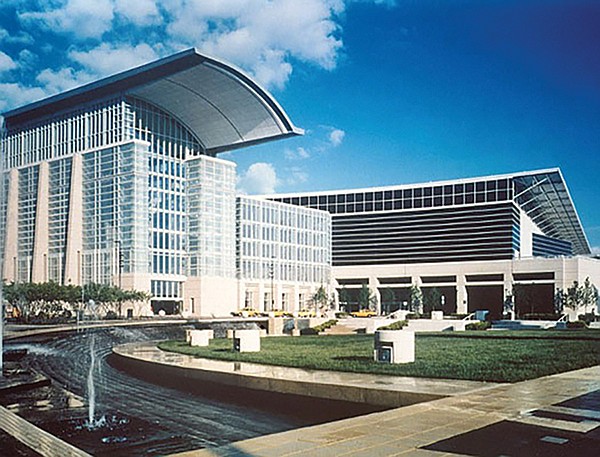
“Some lose humongous amounts of money,” says Sanders, a professor at the University of Texas at San Antonio. McCormick Place in Chicago, one of the best-known and largest centers, “lost $38.1 million in fiscal 2014. The center in Washington, D.C., routinely loses $20 million a year or more. San Diego runs an operating loss — something on the order of a million dollars a year.” The San Diego center, infamous for fiddling with the books, gets $3.5 million of city funds each year and counts it as income.
“No convention center pays anything whatever on its debt service,” says Sanders. The governmental entity subsidizing the center pays the debt service through hotel tax receipts.
Here’s how this scam works: a city’s establishment decides it must expand its convention center to stay ahead of competitors, who are also losing bundles of money on their centers. Taxes are imposed to build the addition. Then, as the expanded center begins operations, losses keep piling up, and they are covered by hotel taxes. Because there is massive overbuilding of convention centers, fees are slashed by 50 percent or more — sometimes down to zero, and sometimes below zero (the convention center pays an organization to use its center). San Diego has cut its prices in half for the customer that gets the most publicity: Comic-Con.
So this is a case of government subsidizing a project its politicians believe it desperately needs, then piling up huge losses while hotel tax receipts are eaten up to cover the deficits.
“The argument is always that this will create an economic boom” which will fill local coffers, says Sanders. Cities argue that there “will be a huge economic impact that will create jobs, create tax revenues, but the tax revenue will be siphoned off to pay for the convention center,” says Sanders. San Diego’s center, along with others, “puts out grand, glossy reports that make it sound like they are doing wonderfully. The reports do not say what it costs.”
The big winners are hotels and, to a lesser extent, restaurants. “It is a classic example of welfare for the rich,” says Sanders. But cities are willing to see their centers pile up huge losses to subsidize those establishments. And there is another big winner: the consulting firms that tell a city that if it enlarges its center, conventioneers will converge on the city en masse. Most of the time, attendance falls far short of the consultants’ predictions.
Municipalities try to recover some of their losses by raising their hotel taxes. At 12.5 percent, San Diego is down with Chula Vista, Orlando, and Tallahassee, according to figures from Chicago’s HVS Convention, Sports & Entertainment. If the rate rises to 16.5, San Diego will be a tiny bit ahead of Chicago and San Francisco but still cheaper than such beauty spots as Kansas City, St. Louis, Birmingham, Cleveland, El Paso, and Omaha.
Both Sanders and Morrison doubt that the increase in San Diego’s transit occupancy (hotel) tax will dent visitations. After all, says Sanders, “Convention planners are not paying those taxes. Attendees are.”
Says Morrison, “That type of rise in and of itself won’t affect occupancy.”
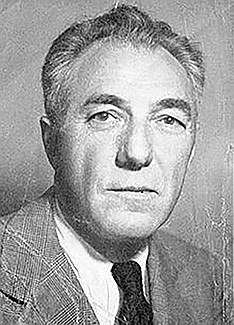
The idea that cities should subsidize sports stadiums and convention centers arose in the 1950s. Because facilities such as Chicago’s Soldier Field and Los Angeles’s Coliseum were built with public money, about 30 percent of the cost of a stadium or arena came from public funds after World War II. But in 1951, Major League Baseball commissioner Ford Frick announced that cities would have to subsidize directly the construction of stadiums. The subsidies zoomed to around 70 percent of the total cost but now are receding somewhat. Objective economists almost unanimously agree that subsidizing a stadium is a waste of money. Urban development does not arise, as teams always claim.
Sanders says the same about convention centers. Cities build and expand them, but attendance does not rise significantly, and the centers pile up huge losses. San Diego can try the convadium, but it won’t result in much more convention business, he says.
Spending the money on San Diego’s real needs — repairing the infrastructure and tackling the homeless problem — would probably attract more tourists.


There are two particularly noisome kinds of welfare for the superrich: subsidization of pro sports facilities and subsidization of hotels. Leave it to San Diego to combine the two so taxpayers may have to cast only one vote in November to bestow big bucks on both kinds of billionaires.
This time, though, there is a difference: some members of the establishment — including hoteliers, the mayor, and Republicans — question the proposal.
Welfare for pro sports and hotel billionaires would be glued together into something called a “convadium” — a Chargers tax-supported football stadium attached to a tax-financed convention center. Disingenuously, this convadium is being called an “expansion” of the current center. It’s not, because it’s several blocks away from the existing center, so it can only be used for two separate conventions.

“Typically, when people are booking a convention, they like it all to be housed under one roof,” says Jerry Morrison, a San Diego hotel expert. Convention attendees “are dragging a bag around all day. They don’t want to take a cab or a bus five or six blocks to go to the next meeting.” Thus, hoteliers want a contiguous expansion of the current center. Republicans don’t like the convadium because the hotel tax would be boosted from 12.5 to 16.5 percent.
Because mainstream media hide the truth about convention center finances, you may not know about the hotel/convention center taxpayer fleece job. First, the construction of large hotels is often subsidized — say 15 percent of the cost.

Then, year after year, convention centers are huge drains on local governments. Heywood Sanders, who accurately predicted the vast overbuilding of American centers back in 2005 for the Brookings Institution and in 2014 wrote an exhaustive book on the topic, Convention Center Follies, says, “Only a tiny handful of convention centers in the U.S. actually make an operating profit” — that is, bring in enough income to cover expenses. Fewer than 5 percent of U.S. centers have income topping expenses.

“Some lose humongous amounts of money,” says Sanders, a professor at the University of Texas at San Antonio. McCormick Place in Chicago, one of the best-known and largest centers, “lost $38.1 million in fiscal 2014. The center in Washington, D.C., routinely loses $20 million a year or more. San Diego runs an operating loss — something on the order of a million dollars a year.” The San Diego center, infamous for fiddling with the books, gets $3.5 million of city funds each year and counts it as income.
“No convention center pays anything whatever on its debt service,” says Sanders. The governmental entity subsidizing the center pays the debt service through hotel tax receipts.
Here’s how this scam works: a city’s establishment decides it must expand its convention center to stay ahead of competitors, who are also losing bundles of money on their centers. Taxes are imposed to build the addition. Then, as the expanded center begins operations, losses keep piling up, and they are covered by hotel taxes. Because there is massive overbuilding of convention centers, fees are slashed by 50 percent or more — sometimes down to zero, and sometimes below zero (the convention center pays an organization to use its center). San Diego has cut its prices in half for the customer that gets the most publicity: Comic-Con.
So this is a case of government subsidizing a project its politicians believe it desperately needs, then piling up huge losses while hotel tax receipts are eaten up to cover the deficits.
“The argument is always that this will create an economic boom” which will fill local coffers, says Sanders. Cities argue that there “will be a huge economic impact that will create jobs, create tax revenues, but the tax revenue will be siphoned off to pay for the convention center,” says Sanders. San Diego’s center, along with others, “puts out grand, glossy reports that make it sound like they are doing wonderfully. The reports do not say what it costs.”
The big winners are hotels and, to a lesser extent, restaurants. “It is a classic example of welfare for the rich,” says Sanders. But cities are willing to see their centers pile up huge losses to subsidize those establishments. And there is another big winner: the consulting firms that tell a city that if it enlarges its center, conventioneers will converge on the city en masse. Most of the time, attendance falls far short of the consultants’ predictions.
Municipalities try to recover some of their losses by raising their hotel taxes. At 12.5 percent, San Diego is down with Chula Vista, Orlando, and Tallahassee, according to figures from Chicago’s HVS Convention, Sports & Entertainment. If the rate rises to 16.5, San Diego will be a tiny bit ahead of Chicago and San Francisco but still cheaper than such beauty spots as Kansas City, St. Louis, Birmingham, Cleveland, El Paso, and Omaha.
Both Sanders and Morrison doubt that the increase in San Diego’s transit occupancy (hotel) tax will dent visitations. After all, says Sanders, “Convention planners are not paying those taxes. Attendees are.”
Says Morrison, “That type of rise in and of itself won’t affect occupancy.”

The idea that cities should subsidize sports stadiums and convention centers arose in the 1950s. Because facilities such as Chicago’s Soldier Field and Los Angeles’s Coliseum were built with public money, about 30 percent of the cost of a stadium or arena came from public funds after World War II. But in 1951, Major League Baseball commissioner Ford Frick announced that cities would have to subsidize directly the construction of stadiums. The subsidies zoomed to around 70 percent of the total cost but now are receding somewhat. Objective economists almost unanimously agree that subsidizing a stadium is a waste of money. Urban development does not arise, as teams always claim.
Sanders says the same about convention centers. Cities build and expand them, but attendance does not rise significantly, and the centers pile up huge losses. San Diego can try the convadium, but it won’t result in much more convention business, he says.
Spending the money on San Diego’s real needs — repairing the infrastructure and tackling the homeless problem — would probably attract more tourists.
Comments